Abstract
The multiplier effect of the Health Education-Risk Reduction (HE-RR) Grants Program funded by the Public Health Service is examined to identify outcomes for the period 1978-81. Responses to a questionnaire from the directors of health education of 28 States and 1 Territory supplied the information concerning new health promotion activities generated by the program. The directors were asked to identify and give cost estimates of new activities that resulted from State-level and local intervention projects. A method for calculating the extent to which the HE-RR program influenced new health promotion activities that were funded by alternate sources was devised. The calculation, termed the new activity rate, was applied to the survey data. Rates calculated for the HE-RR program revealed that it generated nearly $4 million in new health promotion activities, most of them funded by the private and voluntary segments of society.
Full text
PDF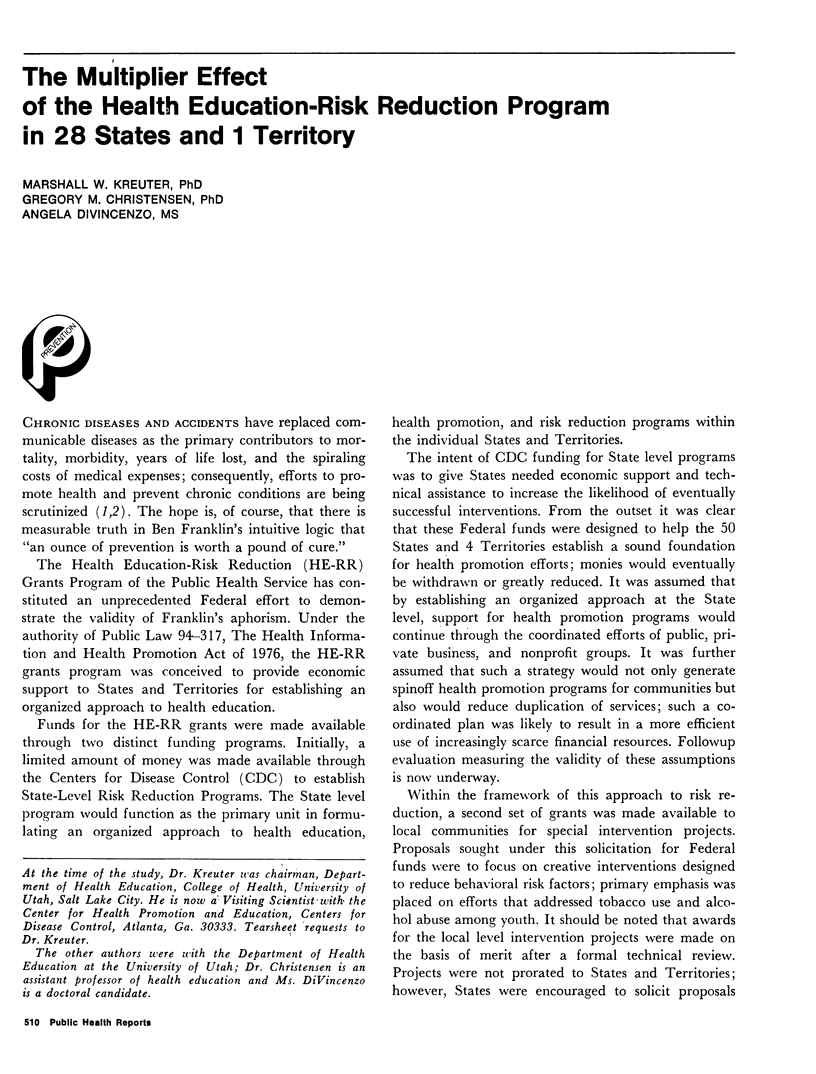
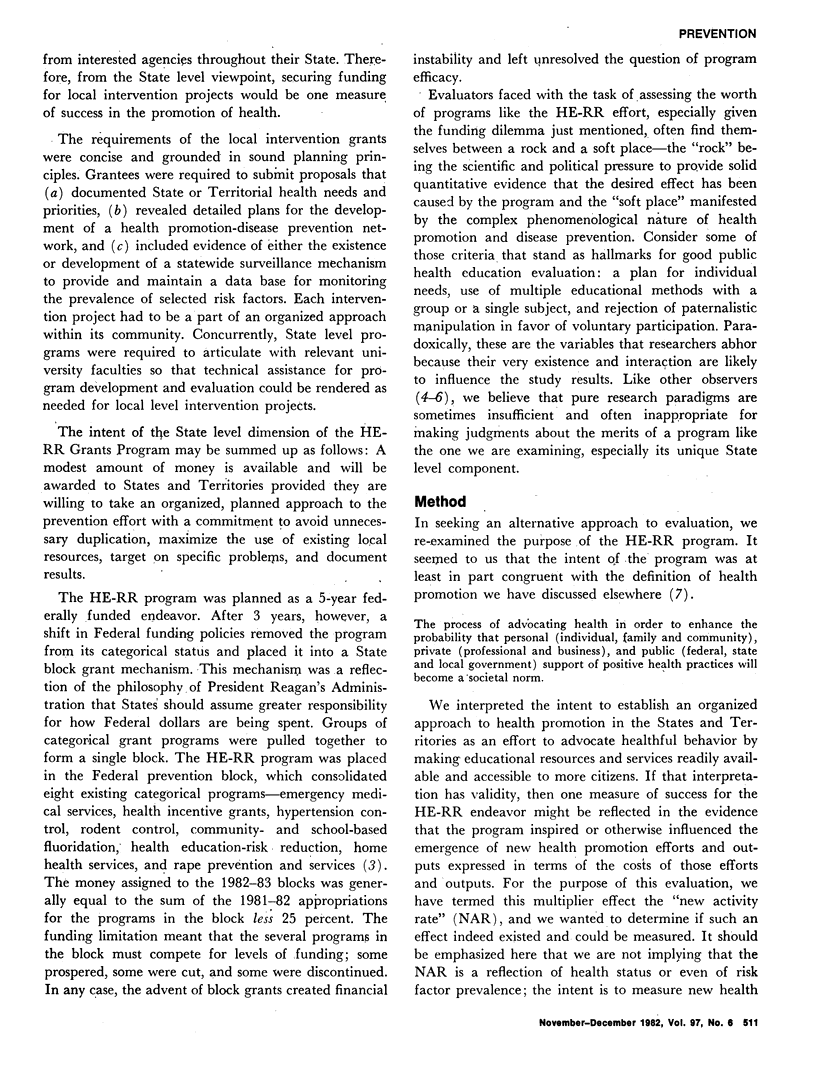
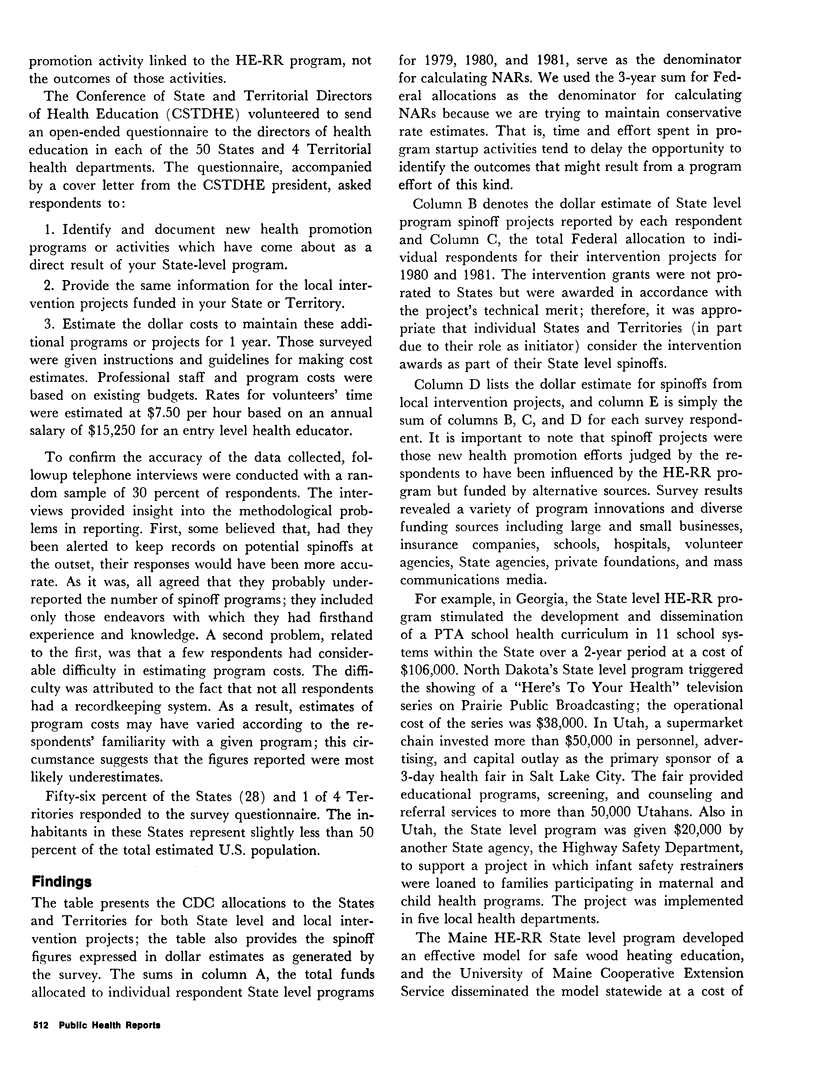
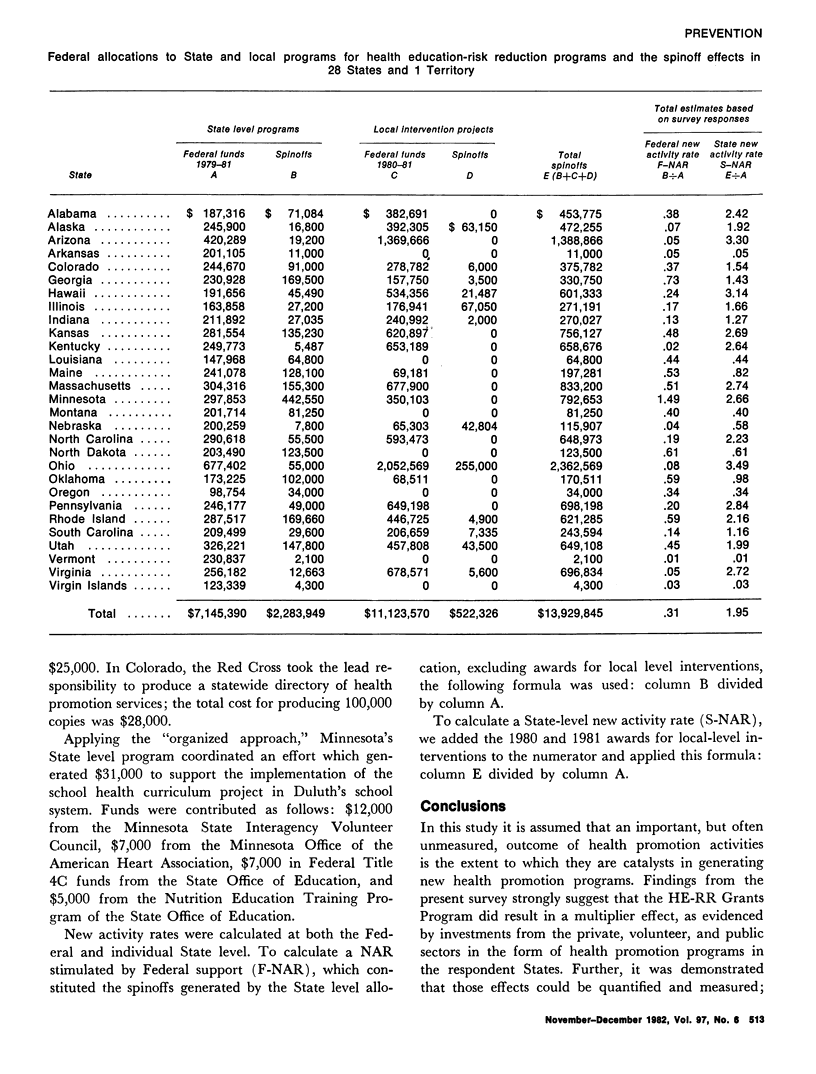

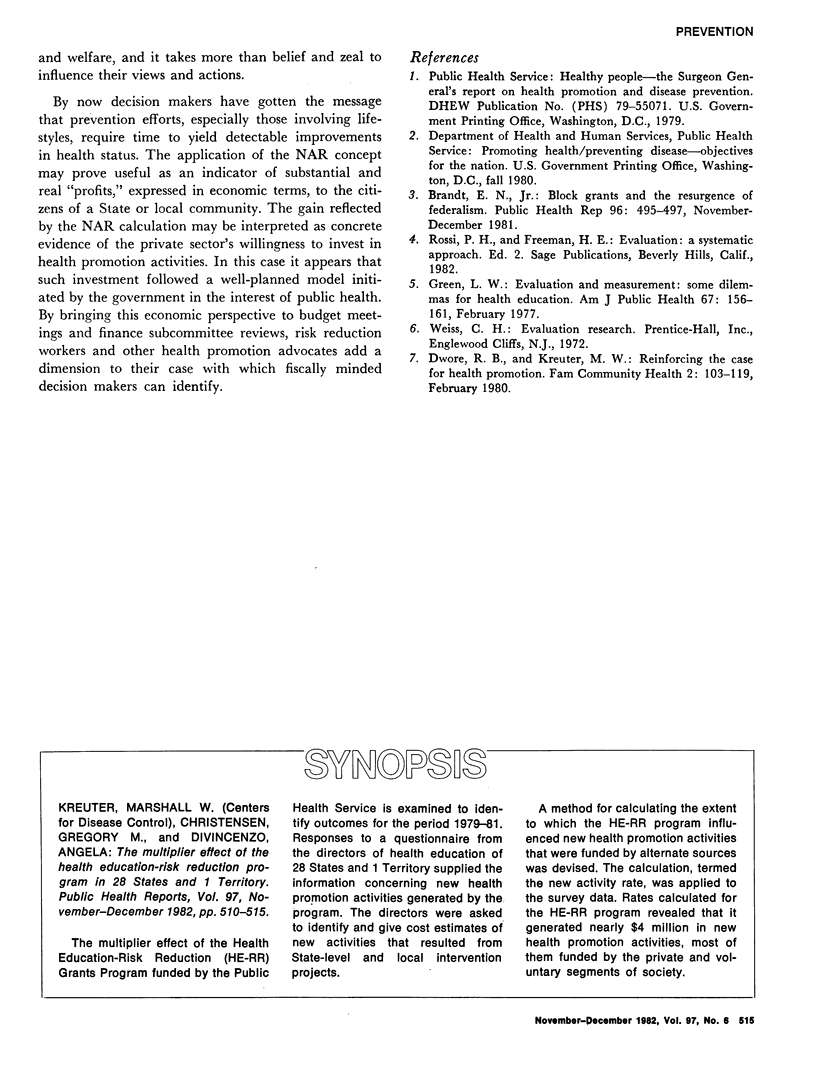
Selected References
These references are in PubMed. This may not be the complete list of references from this article.
- Brandt E. N., Jr Block grants and the resurgence of federalism. Public Health Rep. 1981 Nov-Dec;96(6):495–497. [PMC free article] [PubMed] [Google Scholar]
- Dwore R. B., Kreuter M. W. Reinforcing the case for health promotion. Fam Community Health. 1980 Feb;2(4):103–119. doi: 10.1097/00003727-198002000-00010. [DOI] [PubMed] [Google Scholar]
- Green L. W. Evaluation and measurement: some dilemmas for health education. Am J Public Health. 1977 Feb;67(2):155–161. doi: 10.2105/ajph.67.2.155. [DOI] [PMC free article] [PubMed] [Google Scholar]


